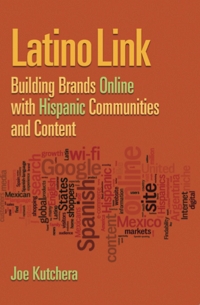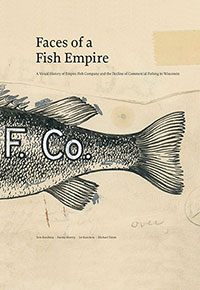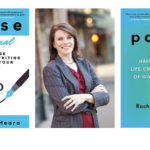This is the second in a three-part series on how to write, edit and promote a book, based on my experience of writing my first book. Read Part I (on how to pitch your book and find a publisher) and Part III (on how to promote your book using social media). I made the above “word cloud” by copying/pasting my entire manuscript into the free web version of Wordle.net.
According to Winston Churchill, “Writing a book is an adventure. To begin with, it is a toy and an amusement; then it becomes a mistress, and then it becomes a master, and then a tyrant. The last phase is that just as you are about to be reconciled to your servitude, you kill the monster, and fling him out to the public.” And it is indeed an adventure, like any long-term goal.
Writing and Blogging Your Book: The Fun Part
When I started this journey, I asked my editor, Doris Walsh, “How many of your authors deliver their manuscript on time?” Doris said, “Most, unfortunately, submit their manuscripts a few months late. And a few are as much as one year behind schedule.” With that in mind, how can you make a realistic plan and stick with it as closely as possible?
Some authors set schedules for posting sections of their book on their blog. This accomplishes two things. It allows authors to set easier-to-accomplish mini-goals and provides feedback on drafts during the editing phase. To use an analogy, a marathon runner explained how she won the New York Marathon: “I count my steps up to ten, ten times. And then I do it all over again.” In other words, she focuses on each individual step in front of her to accomplish her larger goal.
In addition, blogging builds awareness about a book before it launches so that you can actually promote your book while you write it. In this article – Six Ways to Simultaneously Write and Promote your Book – blogger Roger Parker argues that by following these promotional tips, you can build up awareness of your book prior to its launch: expert testimonials, speaking, webinars, article marketing, blogs and social media, and lastly, email newsletters and tips
While I agree with his premise, I disagree with his statement that, “None of the above are tremendously time-consuming.” In fact, I found the opposite to be true. Blogging, speaking, and writing newsletters require an enormous amount of time.
For an opposing viewpoint, read – Top 5 Reasons Authors Shouldn’t Blog Their Books – on TheBookDesigner.com. Joel Friedlander argues that blogging is short-form, journalistic writing that oftentimes requires “chunking” of content. Do readers like books full of bullet lists? Not really. Readers buy books for long-form analysis, case studies, well-told stories and insights.
In hindsight, my book was a combination of the above two approaches. I blogged portions of my book but nearly all of the case studies were fresh (unpublished) for the book’s launch.
Researching and Aggregating Sources for Your Book
How did I organize the research and interviews for Latino Link? Many of the people who I interviewed answered questions by email, which made it much easier to copy, paste, and edit their responses in the manuscript. I then set up individual Word files for each chapter and case study to make it easy to edit and share with my editor.
Author Danny Choo describes how he uses software called Devonthink to pull together research for his books in this article – DIY: How to Write a Book. He describes Devonthink as a “free-form database that accepts many different document types (PDFs, text snippets, web pages, images, etc). It has a very elegant semantic algorithm that can detect relationships between short excerpts of text, so you can use the software as a kind of connection machine, a supplement to your own memory.” Other authors use tools such as Dabble and Evernote.
Choo goes on to describe his research process with Devonthink. “I’ve developed a new approach to using Devonthink… The first stage, which is crucial, is a completely disorganized capture of every little snippet of text that seems vaguely interesting. I grab paragraphs from web pages, from digital books, and transcribe pages from printed text — and each little snippet I just drop into Devonthink with no organization other than a citation of where it came from. This goes on for months and months; I read in a completely unplanned and exploratory way (increasingly online, thanks to Google Books and other sources) and just drag anything that seems at all interesting into Devonthink.”
“And so in the last stage before I actually start writing, I create a little folder in Devonthink for each of the chapters. And then I sit down and read through every single little snippet that I’ve uncovered over the past year or so of research. And as I’m reading them on the screen, I just drag them into the chapter folder where I think they will be most useful. Some snippets get dragged to multiple folders; most don’t make it into any folder. But I read through them all, and in reading through them all, I have a completely new contextual experience of them, because I’m at the end of the research cycle, not at the beginning. They feel like pieces of a puzzle that’s coming together, instead of hints or hunches.”
What do most authors do? If my book is any indication, they probably use Microsoft Word and have multiple piles of books and printed articles on their office desk or dining room table, corresponding to the different chapters and themes within their book.
How did I secure permission to publish the case studies? During the fall of 2009, while preparing the research, I attended the ANA Multicultural, Geoscape, and other marketing conferences asking executives who presented to write up their case studies and add additional commentary for my book. Since they had already received corporate approval to present at the conference, many said yes. That ended up being a great way to recruit marketers to share their case studies.
How many companies did I contact in order to yield eight case studies? I probably contacted eight times as many. Fortunately, many of my early readers tell me that the case studies make the concepts in the book very real and understandable for marketers.
Editing Your Book: The Hard Part
Nathaniel Hawthorne, the American novelist and short story writer, said, “Easy reading is damn hard writing,” which of course only comes with lots of editing. Supreme Court Justice Louis Brandeis asserted, “There is no great writing, only great rewriting.” And Truman Capote noted, “I believe more in the scissors than I do in the pencil.”
Many readers and even first-time authors imagine writers sitting down at their computer, writing chapter one and continuing to type until they arrive at “The End.” That couldn’t be further from the truth. When I started writing my first book, I naively thought that I would plan out my columns from MediaPost to correspond to the various chapters of my book, insert the case studies, and add or edit commentary as needed.
Wow, was I wrong. I significantly underestimated the amount of work and energy that editing a book would take. And while I carefully craft an outline of a book, once I had completed my first manuscript and started the editing process, disparate parts of the book came together in ways that made more sense. As the legendary architect Mies van der Rohr said, “God is in the details.” I heard a similar message from my editor, who warned me, “the hardest part is the last 10%.” We probably sent the manuscript back and forth to one another five or more times, each with new red-lined changes.
Hiring an Editor to Expedite the Editing Process
The best $500 I spent during this process was hiring an additional freelance editor to read through the manuscript, rip out weak points, and restructure chapters to flow better. Doing so made the manuscript much stronger and saved my editor time. Since your freelance editor is not emotionally attached to the words, as all authors are to theirs, they can edit your manuscript at light speed relative to an author. My final manuscript came in at 216 pages whereas the original exceeded 300 pages. Taking that a step further, you can also hire a professional writer to write an entire book with you. This saves time, of course, and prices vary widely depending upon the level of experience of the ghost writer.
John Berendt, the author of the best seller Midnight in the Garden of Good and Evil described one of his editing techniques in The Writer’s Almanac (from December 5, 2010). “When I’m writing, I like to gain distance from my work so I can tell how it will strike a reader who is seeing it for the first time. I do this through a trick I devised while I was living in Savannah writing Midnight — I would call my apartment in New York, the answering machine would pick up, I’d read the page of text I’d just written, then I’d hang up. A minute later, I’d call my apartment again and listen to the “message.” Hearing my own voice reading the page over the phone — my voice having traveled 1,800 miles (900 each way) — gave me just the detached perspective I needed.” Thank you to my dad for forwarding on this editing tip.
Getting Feedback: Asking Colleagues to Read your Manuscript
During the final editing stage, I reached out to a small group of executives and professors to evaluate my manuscript. Their feedback proved enormously constructive, although sometimes hard to hear. We discovered a few holes in the book that required adding research. I eliminated my chapter on maps entirely, posting it on my blog instead, and ultimately finessed the book for the target audience. I added a chapter on mobile marketing and plugged in new research from the IAB’s study about Hispanics Online.
Thanks again to my editors and advisors: Ana Grace from Best Buy, Jon Stross from Babycenter, Pablo Slough from Google, Dr. Felipe Korzenny from Florida State University, Dr. Nitish Singh from St. Louis University, and Antonella Severo, from Motiva Web Consulting. They all helped me focus the book on the core concepts and make it more useful. One interesting piece of feedback that a few executives conveyed was, “Please make it a paperback. I hate carrying hardcover books on airplane rides.”
In conclusion, the American novelist Martha Albrand summed up the importance of editing when she said, “All writing is a process of elimination.” And Philip Cosby, the businessman and author, suggested, “When in doubt, delete it.”
Continue reading my tips on how to write, edit and promote a book in Part I (on how to pitch your book and find a publisher) and Part III (on how to promote your book using social media).







